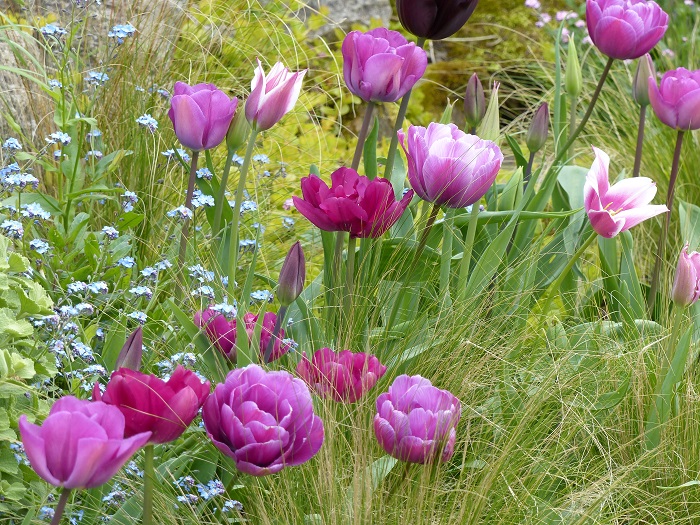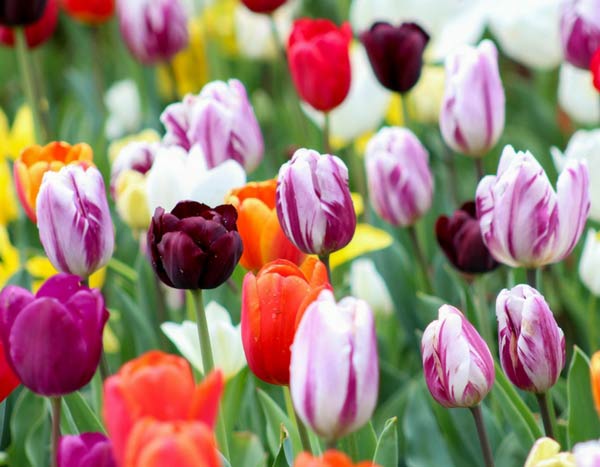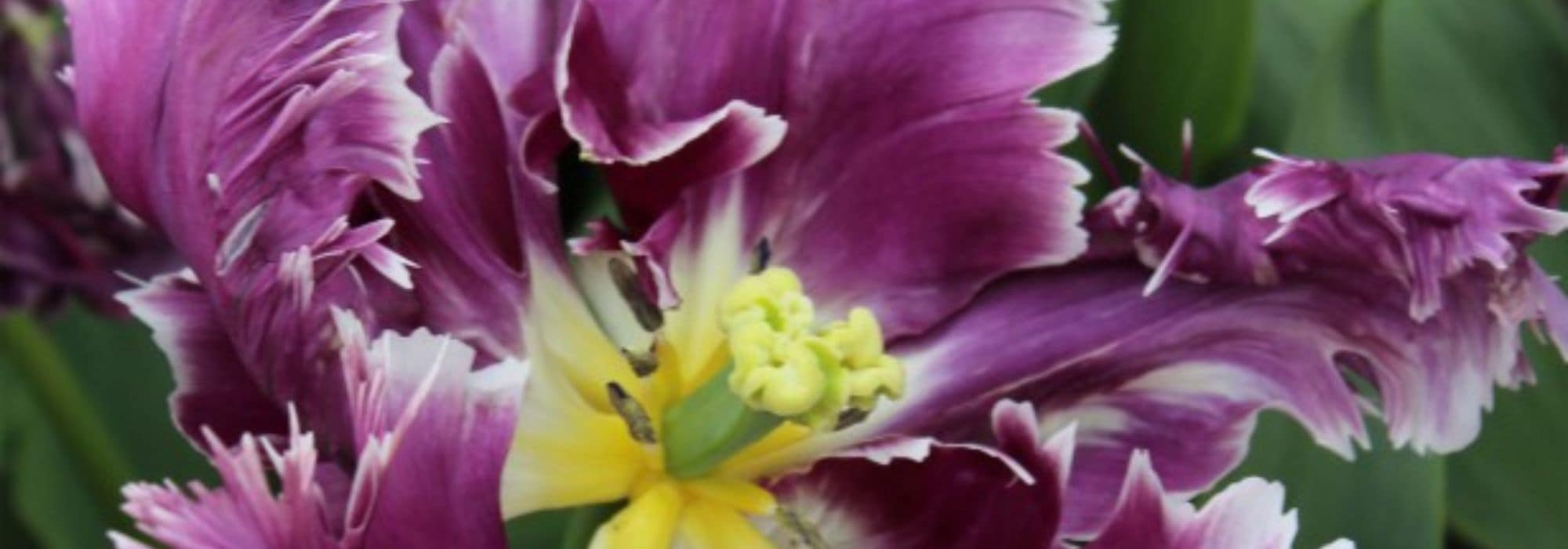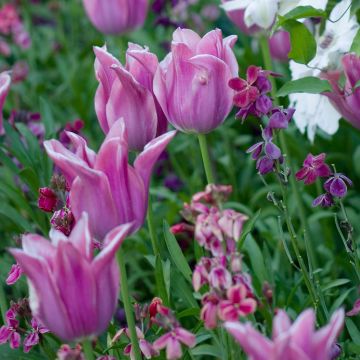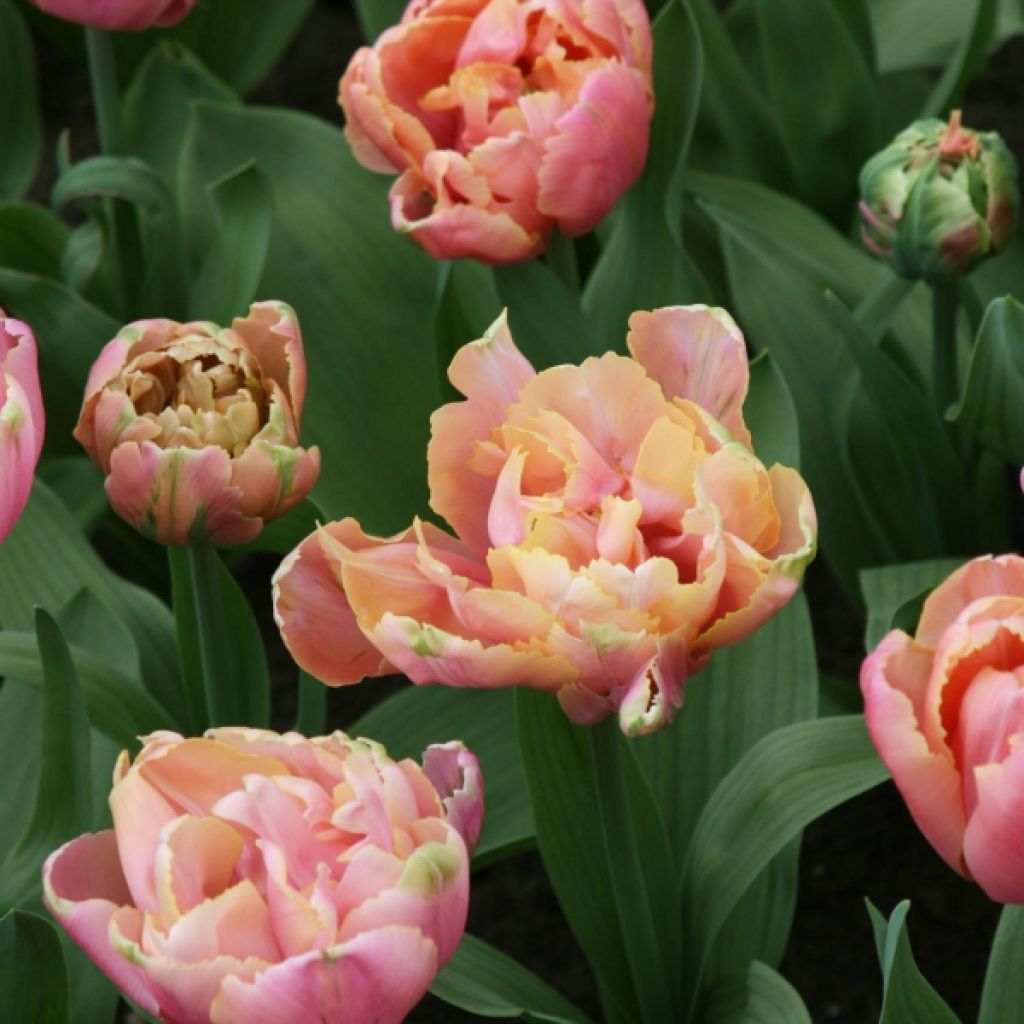

Tulipe Double Tardive Pink Star


Tulipe double tardive Pink Star - Tulipe à fleur de pivoine.
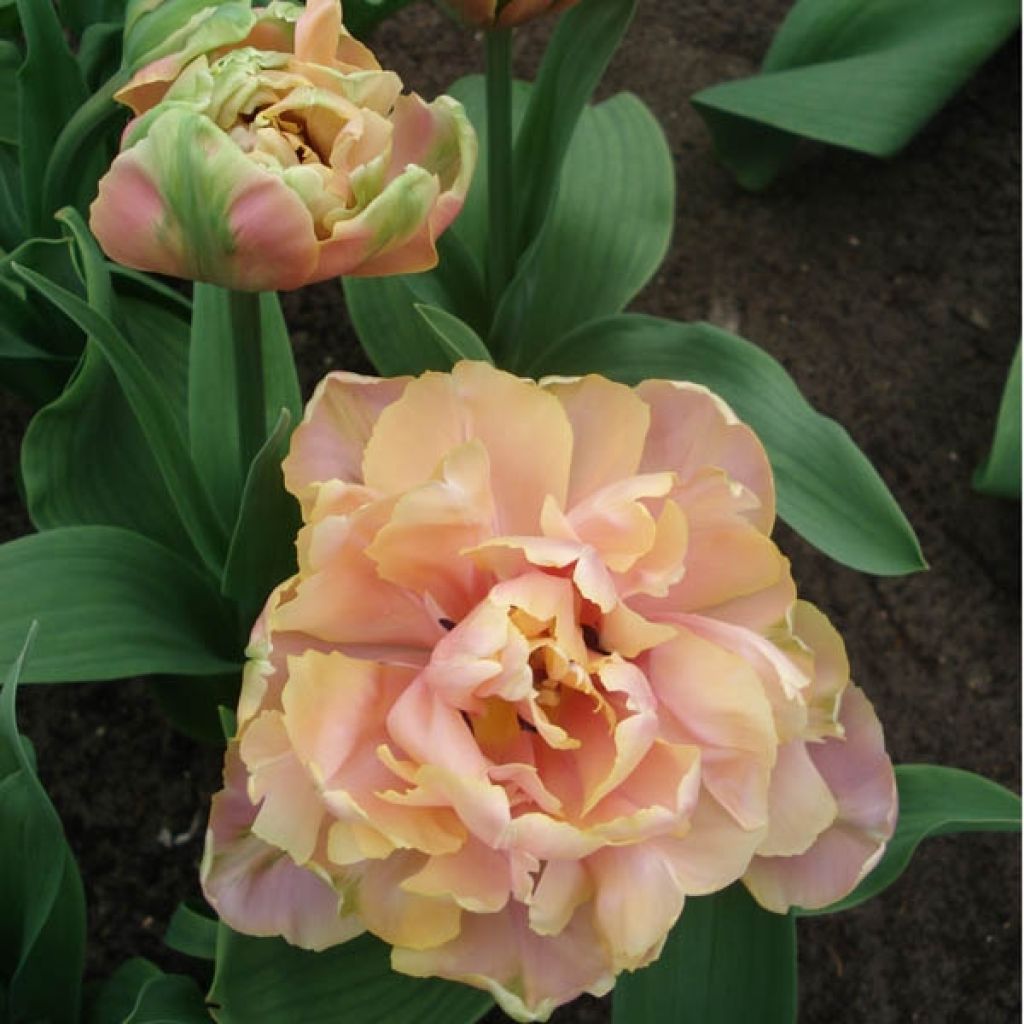

Tulipe Double Tardive Pink Star
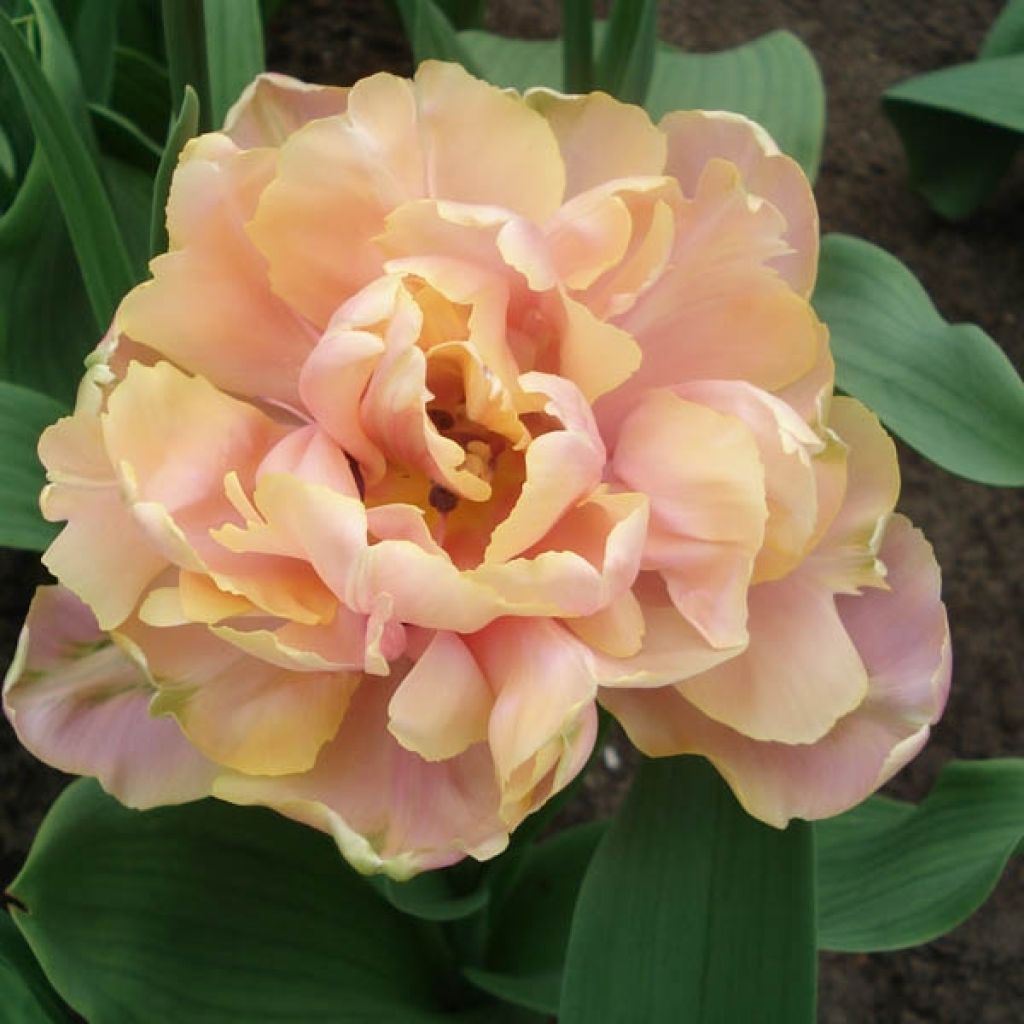

Tulipe Double Tardive Pink Star
Tulipa Pink Star - Double Late Tulip
Tulipa Pink Star
Tulip
Satisfied with the quality of these bulbs, but we'll have to wait until spring to make a more definitive judgment...
Ambraco, 09/10/2023
Special offer!
Receive a €20 voucher for any order over €90 (excluding delivery costs, credit notes, and plastic-free options)!
1- Add your favorite plants to your cart.
2- Once you have reached €90, confirm your order (you can even choose the delivery date!).
3- As soon as your order is shipped, you will receive an email containing your voucher code, valid for 3 months (90 days).
Your voucher is unique and can only be used once, for any order with a minimum value of €20, excluding delivery costs.
Can be combined with other current offers, non-divisible and non-refundable.
This plant carries a 6 months recovery warranty
More information
We guarantee the quality of our plants for a full growing cycle, and will replace at our expense any plant that fails to recover under normal climatic and planting conditions.

Would this plant suit my garden?
Set up your Plantfit profile →
Description
The 'Pink Star' Late Double Tulip is a highly appreciated variety in the garden as well as in a vase for its changing colour and excellent longevity. Its beautiful double flower, referred to as a peony flower, starts off with a magenta pink tone that fades as it matures, with each petal taking on a soft yellow to salmon hue along the edges and at the heart of the corolla. This tulip develops a firm and sturdy stem, very short, highly resistant to wind and rain. It blooms in May, at the end of the tulip season.
Modern tulips are distant descendants of wild tulips, originating from Kazakhstan, Uzbekistan, and Tajikistan, and all possess good hardiness. In general, tulips prefer climates with contrasting seasons, experiencing cold winters and dry, hot summers.
The 'Pink Star' Tulip belongs to the lily family. Of horticultural origin, obtained in the Netherlands in 1992, it is currently classified in the group of 'Late Double Tulips', characterized by their very double and crumpled peony-like flowers. 'Pink Star' is also the result of a mutation (the sudden appearance of new characteristics that persist in subsequent generations). It is not very tall (35cm (14in)) and its flower is of a good size, with a diameter of 10cm (4in), double and well arranged. Its soft and refined colour palette includes magenta pink, followed by pale pink, very light yellow, and salmon, ending with white along the edges of the petals towards the end of flowering. The shell-like shape of its petals and their satin texture add an additional charm, making it a true favourite, especially when its buds slowly open in a vase, almost ceremoniously. The flowering takes place in mid-May, at the end of the tulip season.
The 'Pink Star' Late Double Tulip finds its place in large flower beds. It can also be planted in borders, rock gardens, flower beds, as well as in pots and containers. This tulip enhances balconies and terraces very well. It pairs perfectly with tall perennials and is ideal for creating elegant bouquets. In a vase, only a small amount of water is needed, just enough to cover the bottom! Additionally, if your tulips open too quickly, you can add two to three ice cubes to the vase each day. Unmatched for bringing the colours of spring to pots or sunny gardens, don't forget to consider the height and flowering period when designing your flower beds, as these parameters can vary significantly from one cultivar to another. It is wise to plant a few more bulbs for cutting, as they make gorgeous long-lasting cut flowers.
Plant habit
Flowering
Foliage
Botanical data
Tulipa
Pink Star
Liliaceae
Tulip
Cultivar or hybrid
Planting and care
Plant the bulbs in the autumn, from September to December, at a depth of 15cm (6in), spacing them 10cm (4in) apart. The planting should be done in ordinary soil, slightly acidic, neutral, or slightly alkaline, loose, well-worked, and well-draining. Never add poorly decomposed manure or compost to the planting soil, as this could cause the bulbs to rot. The 'Nizza' tulip will grow well in moist to dry soil in the summer. Plant it in a sunny or partially shady location. Once flowering is complete, it is preferable to remove the fruits to avoid exhausting the plant.
Planting period
Intended location
Care
Planting & care advice
-
, onOrder confirmed
Reply from on Promesse de fleurs
Similar products
Haven't found what you were looking for?
Hardiness is the lowest winter temperature a plant can endure without suffering serious damage or even dying. However, hardiness is affected by location (a sheltered area, such as a patio), protection (winter cover) and soil type (hardiness is improved by well-drained soil).

Photo Sharing Terms & Conditions
In order to encourage gardeners to interact and share their experiences, Promesse de fleurs offers various media enabling content to be uploaded onto its Site - in particular via the ‘Photo sharing’ module.
The User agrees to refrain from:
- Posting any content that is illegal, prejudicial, insulting, racist, inciteful to hatred, revisionist, contrary to public decency, that infringes on privacy or on the privacy rights of third parties, in particular the publicity rights of persons and goods, intellectual property rights, or the right to privacy.
- Submitting content on behalf of a third party;
- Impersonate the identity of a third party and/or publish any personal information about a third party;
In general, the User undertakes to refrain from any unethical behaviour.
All Content (in particular text, comments, files, images, photos, videos, creative works, etc.), which may be subject to property or intellectual property rights, image or other private rights, shall remain the property of the User, subject to the limited rights granted by the terms of the licence granted by Promesse de fleurs as stated below. Users are at liberty to publish or not to publish such Content on the Site, notably via the ‘Photo Sharing’ facility, and accept that this Content shall be made public and freely accessible, notably on the Internet.
Users further acknowledge, undertake to have ,and guarantee that they hold all necessary rights and permissions to publish such material on the Site, in particular with regard to the legislation in force pertaining to any privacy, property, intellectual property, image, or contractual rights, or rights of any other nature. By publishing such Content on the Site, Users acknowledge accepting full liability as publishers of the Content within the meaning of the law, and grant Promesse de fleurs, free of charge, an inclusive, worldwide licence for the said Content for the entire duration of its publication, including all reproduction, representation, up/downloading, displaying, performing, transmission, and storage rights.
Users also grant permission for their name to be linked to the Content and accept that this link may not always be made available.
By engaging in posting material, Users consent to their Content becoming automatically accessible on the Internet, in particular on other sites and/or blogs and/or web pages of the Promesse de fleurs site, including in particular social pages and the Promesse de fleurs catalogue.
Users may secure the removal of entrusted content free of charge by issuing a simple request via our contact form.
The flowering period indicated on our website applies to countries and regions located in USDA zone 8 (France, the United Kingdom, Ireland, the Netherlands, etc.)
It will vary according to where you live:
- In zones 9 to 10 (Italy, Spain, Greece, etc.), flowering will occur about 2 to 4 weeks earlier.
- In zones 6 to 7 (Germany, Poland, Slovenia, and lower mountainous regions), flowering will be delayed by 2 to 3 weeks.
- In zone 5 (Central Europe, Scandinavia), blooming will be delayed by 3 to 5 weeks.
In temperate climates, pruning of spring-flowering shrubs (forsythia, spireas, etc.) should be done just after flowering.
Pruning of summer-flowering shrubs (Indian Lilac, Perovskia, etc.) can be done in winter or spring.
In cold regions as well as with frost-sensitive plants, avoid pruning too early when severe frosts may still occur.
The planting period indicated on our website applies to countries and regions located in USDA zone 8 (France, United Kingdom, Ireland, Netherlands).
It will vary according to where you live:
- In Mediterranean zones (Marseille, Madrid, Milan, etc.), autumn and winter are the best planting periods.
- In continental zones (Strasbourg, Munich, Vienna, etc.), delay planting by 2 to 3 weeks in spring and bring it forward by 2 to 4 weeks in autumn.
- In mountainous regions (the Alps, Pyrenees, Carpathians, etc.), it is best to plant in late spring (May-June) or late summer (August-September).
The harvesting period indicated on our website applies to countries and regions in USDA zone 8 (France, England, Ireland, the Netherlands).
In colder areas (Scandinavia, Poland, Austria...) fruit and vegetable harvests are likely to be delayed by 3-4 weeks.
In warmer areas (Italy, Spain, Greece, etc.), harvesting will probably take place earlier, depending on weather conditions.
The sowing periods indicated on our website apply to countries and regions within USDA Zone 8 (France, UK, Ireland, Netherlands).
In colder areas (Scandinavia, Poland, Austria...), delay any outdoor sowing by 3-4 weeks, or sow under glass.
In warmer climes (Italy, Spain, Greece, etc.), bring outdoor sowing forward by a few weeks.


































